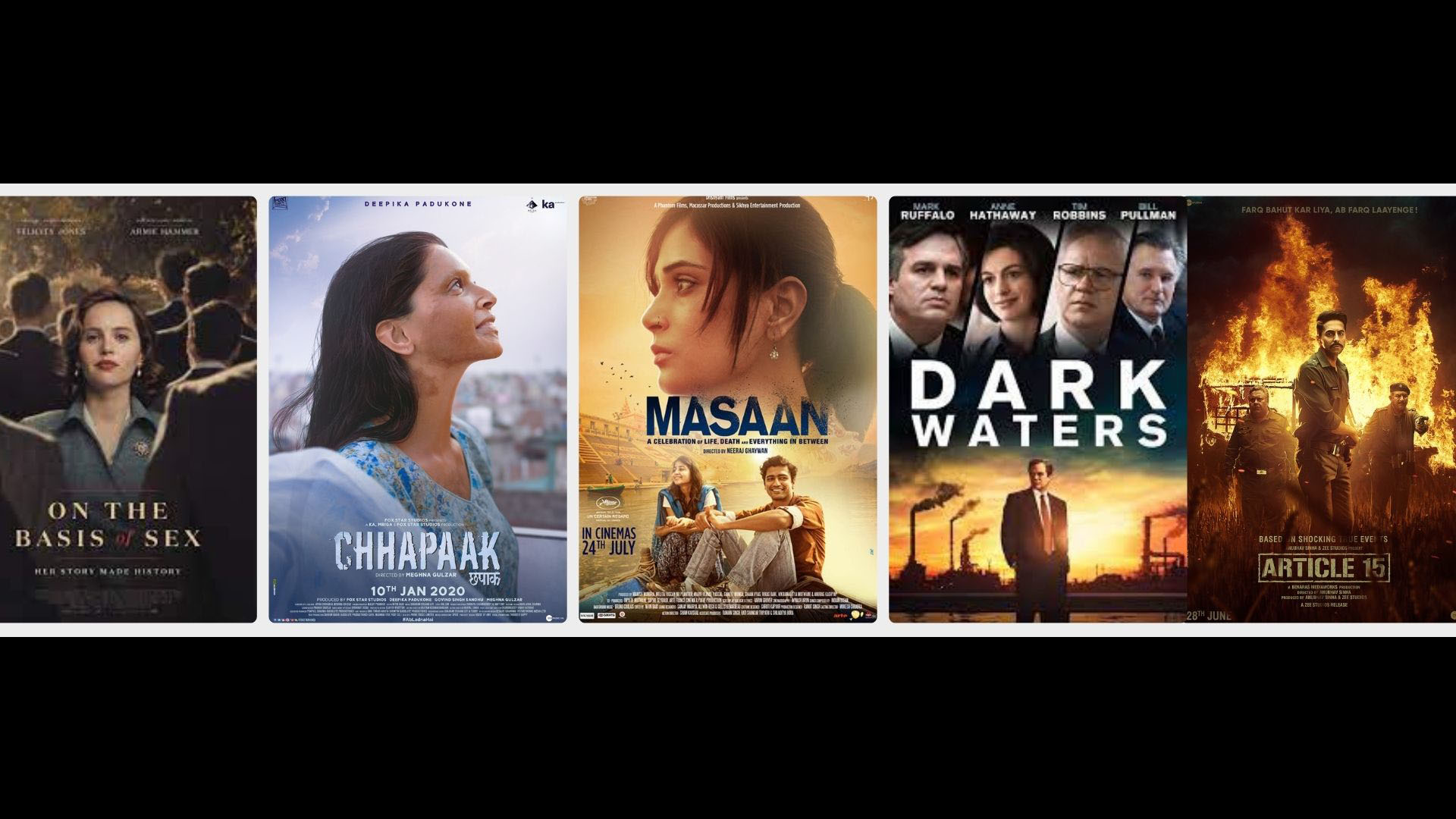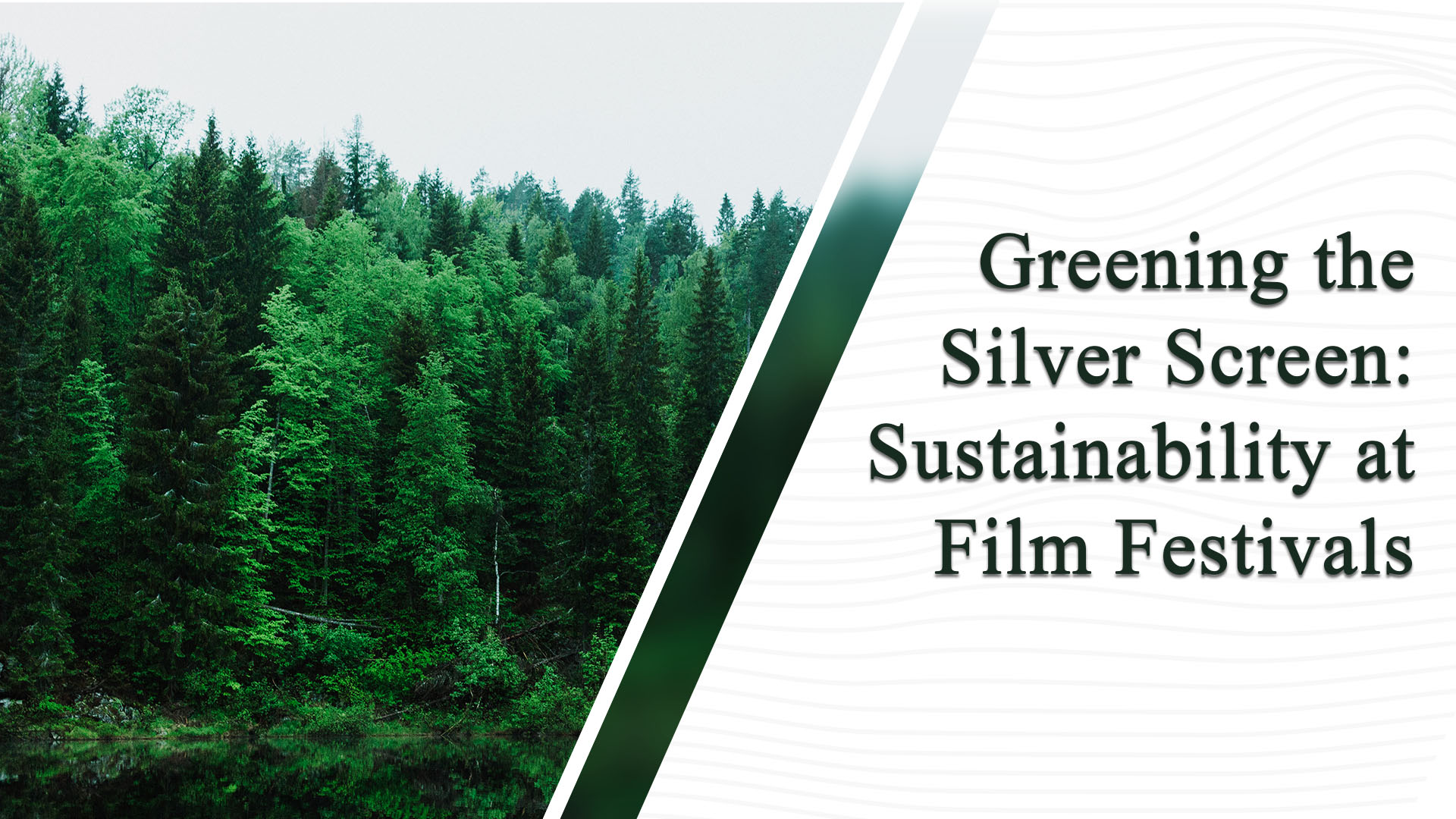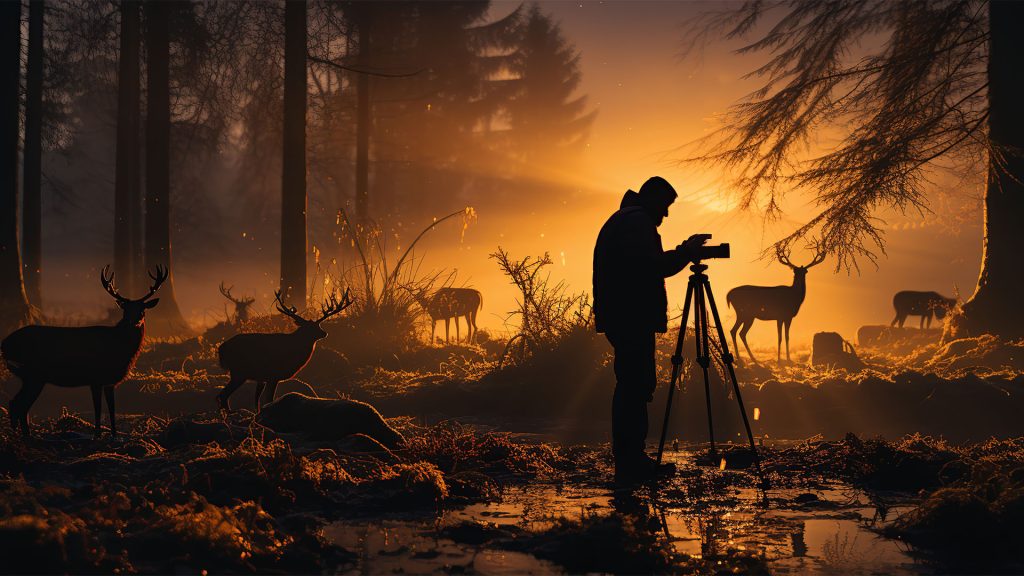The post Monthly Results : March – April 2024 appeared first on GAA.
]]>The post Monthly Results : March – April 2024 appeared first on GAA.
]]>The post Top 10 Eco-friendly Films appeared first on GAA.
]]>
Cinema, a powerful medium for storytelling, can also be a catalyst for change. Several films have transcended mere entertainment and become advocates for environmental awareness, highlighting the challenges and inspiring sustainable solutions. Here are 10 eco-friendly films that not only captivated film audiences but also championed the green cause:
- Ferngully: The Last Rainforest (1992): This animated classic uses vibrant animation film and catchy songs to tell the story of the rainforest’s destruction from the perspective of its inhabitants. It sparks conversation about deforestation and the importance of protecting biodiversity.
- Erin Brockovich (2000): Based on a true story, this film showcases the courage of an environmental activist fighting against a corporation polluting a town’s water supply. It empowers individuals to speak up against environmental injustice.
- An Inconvenient Truth (2006): Former US Vice President Al Gore’s documentary uses scientific evidence and personal stories to raise awareness about climate change. It sparked a global movement and continues to be a crucial resource for understanding the environmental crisis.
- Home (2009): This French documentary takes viewers on a breath taking journey around the world, showcasing the beauty and fragility of the planet. It serves as a powerful reminder of the need to protect our precious ecosystems.
- WALLE (2008): This Pixar animation depicts a future Earth rendered uninhabitable by human waste. The film explores themes of consumption and the importance of waste management, showcasing the potential for rebuilding a sustainable future.
- Food, Inc. (2009): This investigative documentary exposes the industrial food system’s detrimental effects on the environment, animal welfare, and human health. It encourages viewers to make informed food choices and support sustainable agricultural practices.
- The Lorax (2012): Based on Dr. Seuss’s beloved children’s book, this animated film emphasizes the importance of protecting endangered species and preserving natural habitats. It serves as a valuable educational tool for young film audiences.
- Kiss the Ground (2021): This documentary dives deep into the regenerative agriculture movement and its potential to combat climate change. It showcases how restoring soil health can revitalize ecosystems and mitigate environmental damage.
- I Am Greta (2020): This documentary chronicles the journey of young climate activist Greta Thunberg. It highlights the power of individual action and inspires viewers to advocate for climate change solutions.
These films represent a diverse range of genres and filmmaking styles, but they all share a common goal: to raise awareness about environmental issues and promote sustainable practices. So, grab some popcorn, dim the lights, and embark on a cinematic journey towards a brighter, more sustainable future. Remember, even the smallest actions, like choosing eco-friendly films at film festivals or supporting green filmmaking initiatives, can collectively make a significant difference.
The post Top 10 Eco-friendly Films appeared first on GAA.
]]>The post Balancing Creativity and Environmental Responsibility appeared first on GAA.
]]>
Hey fellow film enthusiasts! As we immerse ourselves in the magic of movies, it’s time to shine a spotlight on a game-changer – sustainable filmmaking. Yep, you heard it right! The film industry is not just about dazzling movie premieres and red carpets anymore; it’s also about going green without sacrificing the creative juice.
The Eco-Friendly Script: Films with a Conscience
Picture this: A film that not only blows your mind with its storyline but also leaves a positive mark on Mother Earth. That’s the essence of sustainable filmmaking – a movement where every film script page turns into a pledge to reduce the environmental impact. From energy-efficient lighting setups to eco-friendly film props, filmmakers are weaving narratives that champion creativity and environmental responsibility in the same breath.
Film Festivals Go Green
Now, let’s talk film festivals – the ultimate playground for filmmakers. These events are not just about showcasing the best of cinema, they’re turning into eco-conscious film hubs. Think paperless ticketing, venues powered by renewable energy many film festivals like are leading the charge, proving that glitz and green can go hand in hand.
Eco-Warrior Filmmakers: Lights, Camera, Activism
Who are the rockstars of sustainable filmmaking? Enter the eco-warrior filmmakers! These are the visionaries who aren’t just about making movies, they’re about making a statement. Beyond the lens, they’re making eco-smart choices, from sustainable catering to embracing renewable energy on set. It’s not just filmmaking; it’s activism with a dash of cinematic flair.
Low-Budget, Big Impact: Creativity Meets Conservation
You might think sustainability is a luxury for big-budget film productions, right? Wrong! Indie filmmakers are proving that you can make waves on a shoestring budget. They’re getting crafty with reclaimed props, thrifty with recycled costumes, and scouting low-impact film shooting locations. It’s all about making every dollar count while leaving a minimal environmental footprint.
Lights Out on Waste: Toward Zero Waste Sets
Ever wondered about the insane amount of waste generated on film sets? Well, the times, they are now changing! Filmmakers are saying goodbye to waste with zero-waste initiatives on sets. Recycling stations, composting efforts, and a push for reusable materials – it’s like a green revolution happening in the world of filmmaking where the magic unfolds.
In Conclusion: Green Dreams, Big Screens
So, what’s the takeaway from this green revolution in filmmaking? It’s not about sacrificing creativity for the sake of the environment. It’s about finding that sweet spot where art and eco-consciousness dance together. The future of filmmaking isn’t just about box office numbers, it’s about the impact we leave on the world. Lights, camera, green action – it’s not just a trend it’s the future we’re filming.
As we continue to be spellbound by the big screens for filming, let’s also root for a behind-the-scenes revolution where every filmmaker becomes a steward of creativity and a guardian of the environment. Here’s to a future where the film credits roll not just for the film actors but also for the positive change we bring to our planet. Cheers to lights, cameras, and a whole lot of green action!
The post Balancing Creativity and Environmental Responsibility appeared first on GAA.
]]>The post Wildlife Filmmaking appeared first on GAA.
]]>The post Wildlife Filmmaking appeared first on GAA.
]]>The post Short films that sparked conversation and change appeared first on GAA.
]]>
Short films have long been a powerful medium for storytelling, allowing filmmakers to convey impactful messages in a condensed format. Over the years, several short films have not only captured audiences with their compelling film narratives and cinematic brilliance but have also sparked important conversations and instigated positive change. In this article, we will explore some notable examples of short films that have left a lasting impact on society by addressing pressing issues and inspiring meaningful dialogue.
- Trip to the Moon (1902): “A Trip to the Moon” (French: Le voyage dans la lune) is a 1902 French science-fiction adventure film directed by Georges Méliès. Drawing inspiration from various sources, including Jules Verne’s 1865 novel “From the Earth to the Moon” and its 1870 sequel “Around the Moon,” the film is a pioneering work in the science fiction film genre. Georges Méliès, the film director, utilized innovative techniques and special effects for its time, making it a landmark film production in the history of cinema. The impact of the film cannot be overstated. Among the hundreds of films completed by the Godfather of cinema, this particular one has endured the test of time. The film narrative follows a group of astronomers on a voyage to the moon. Their exploration, encounters with natives, and the return to Earth with a captive are portrayed with cutting-edge special effects in the film for its time. Released in 1902, “Trip to the Moon” was likely a cinematic revelation, akin to the impact of “Titanic” upon its release. The film’s storytelling power shines even without audible dialogue. The enduring theme of human exploration is cleverly realized in this short film. Despite facing piracy, it achieved significant financial success, solidifying its place in cinematic history.
- A Dog’s Life (1918): “A Dog’s Life” is a 1918 American silent short film written, film produced, and film directed by Charlie Chaplin, marking his debut with First National Films under a groundbreaking $1 million contract. It was the first of eight 3-reel short silent films.
- The Red Balloon (1956): “The Red Balloon” (French: Le ballon rouge) is a French fantasy comedy-drama short film from 1956, penned, film produced, and film directed by Albert Lamorisse. This thirty-four-minute short filmnarrates the escapades of a young boy who discovers a sentient, silent, red balloon, and it was shot in the Ménilmontant neighbourhood of Paris. It is one of the greatest survival and friendship stories through film ever told. The movie received multiple accolades, securing an Oscar for Best Original Screenplay in 1956 and the Palme d’Or for short films at the 1956 Cannes Film Festival. Additionally, it gained popularity among children and educators, standing out as the sole short film to ever win the Oscar for Best Original Screenplay.
- Dinner for One (1963): “Dinner for One“, also known as “The 90th Birthday,” is a two-person comedy sketch originally written by Lauri Wylie for the theatre. The German TV broadcaster Norddeutscher Rundfunk (NDR) recorded the sketch in 1962, featuring British comedians Freddie Frinton and May Warden. Heinz Piper introduces the story of Miss Sophie celebrating her 90th birthday in this film. It has become a tradition to watch the film on New Year’s Eve in European countries like Germany, Austria, Switzerland, Denmark, Sweden, Finland, and Estonia. Despite the film’s British origin, it gained recognition in the UK in recent years and was broadcast on Sky Arts from 2018 to 2020.
- Frankenweenie (1984): “Frankenweenie” is a 1984 American science fiction comedy horror short film directed by Tim Burton and co-written by Tim Burton and Leonard Ripps. Serving as both a film parody and homage to the 1931 film “Frankenstein,” which was inspired by Mary Shelley‘s novel “Frankenstein; or, The Modern Prometheus,” the short film was later expanded into a full-length stop-motion animated film remake by Tim Burton in 2012. Tim Burton was fired by Disney after completing “Frankenweenie,” citing resource misuse and unsuitability for the film’s target audience. Originally planned for a summer film release, it was rescheduled for Christmas 1984. Although shelved, it screened in UK cinemas in 1985. Following Tim Burton‘s later successes, it received a home video film release in 1992, included as an extra on “The Nightmare Before Christmas” DVD, Blu-ray, UMD, and the 2000 VHS, alongside Tim Burton‘s short film “Vincent”.
- The Lunch Date (1989): The Lunch Date is an American drama short film written and directed by Adam Davidson. It is a thought-provoking short film that revolves around a woman who accidentally takes someone else’s lunch and finds herself sitting across from a homeless man in a train station. The film explores themes of prejudice and assumptions. By challenging stereotypes, it encourages film viewers to reconsider their preconceived notions about others. “The Lunch Date” won the Academy Award for Best Live Action Short Film and remains relevant in discussions about empathy and human connection. In 2013, the Library of Congress chose to preserve the film in the United States National Film Registry due to it being a “culturally, historically, or aesthetically significant film of the century.
- Carne (1991): “Carne” is a 1991 French drama short film, written and directed by Gaspar Noé. Starring Philippe Nahon and Blandine Lenoir, the film revolves around a horse butcher and his mute daughter. Gaspar creates filmsthat, while not easily digestible, prompt film viewers to question and challenge themselves. Although his films may not be conventionally attractive, they captivate film audiences, leaving them intrigued and compelled to ponder the reasons behind their discomfort.
- Multi-facial (1995): “Multi-Facial” is a 1995 American short drama film, with Vin Diesel serving as the film writer,film director, film producer, and film scorer. The film features Vin Diesel as a multiracial film actor, exploring the professional and emotional challenges he encounters. The short film tells his own real-life story about the problems he faced landing roles due to his ambiguous ethnicity. Apparently, he wasn’t black enough to play black, white enough to play white, and couldn’t speak Spanish so he couldn’t play a Latino.
- Doodlebug (1997): “Doodlebug” is a psychological thriller short film, scripted and film directed by Christopher Nolan. The film plot revolves around a man desperately attempting to eliminate a bug-like creature within his apartment. Nolan crafted the film during his university years, utilizing 16 mm film for its production. Overall, “Doodlebug” received a favorable critical response. The Daily Telegraph acknowledged the short film‘s early display of Nolan‘s talent in crafting unsettling film narratives.
- The Girl Effect (2008): Created by the Nike Foundation, “The Girl Effect” is an animated short film that highlights the transformative power of investing in girls and young women. The film emphasizes the positive ripple effect that occurs when girls are educated and empowered. By shedding light on the challenges faced by young girls in developing countries, “The Girl Effect” advocates for the importance of education and gender equality in breaking the cycle of poverty. This film had the potential to strike criticism amongst the masses, mostly from women in the developing world.
- The Hunt for Gollum (2009): “The Hunt for Gollum” is a 2009 British fantasy fan film inspired by the appendices of J. R. R. Tolkien‘s book “The Lord of the Rings.” This film gained widespread acclaim, accumulating 3 million views within the first three months of its release. It was lauded as one of the best-made fan films on the internet and quickly became the “fourth most watched release in the US” shortly after its May 2009 debut. Rotten Tomatoes suggested that the film had the potential to outshine certain mainstream movies. Tolkien scholar Robin Anne Reid observed that the film‘s professional film production values set it apart from typical fan film productions, labeling it a “hybrid fan/pro film.”
- I Am (2010): Directed by Tom Shadyac, “I Am” is a documentary-style short film that delves into the filmmaker‘s personal journey in search of the true nature of humanity and the interconnectedness of all living things. Tom Shadyac, known for directing blockbuster film comedies, takes a philosophical turn in this film, addressing issues such as materialism, greed, and the pursuit of happiness. “I Am” encourages film viewers to reflect on their own lives and consider how their choices impact the world around them. This film sparked the question of “What is with the World and what can we do about it?”
- Thunder Road (2016): “Thunder Road” is a short comedy-drama film written, film directed, and film starring Jim Cummings. Shot in one take, the film portrays a police officer delivering a eulogy for his mother. Premiered at the 2016 Sundance Film Festival, it earned positive reviews and secured the Short Film Grand Jury Prize. The filmwas adapted into a long-form feature film and was a giant hit in France.
- Lights Out (2016): “Lights Out” is a 2016 American supernatural horror film directed by David F. Sandberg in his film directorial debut. the story revolves around a woman protecting her young stepbrother from a spirit that kills in the dark, stemming from her family’s past. After the success of the short film, Sandberg announced a feature filmadaptation, and filming took place in Los Angeles from June to August 2015. The film holds a 75% approval rating on Rotten Tomatoes, based on 183 reviews, with a weighted average score of 6.3/10. The critical consensus praises “Lights Out” for adeptly using film genre tropes and delivering a chilling experience with strong performances and a well-developed story. Lights Out received positive reviews for its film direction, film screenplay, acting, cinematography, and film musical score. It grossed $148 million against a $4.9 million budget, leading to the development of a film sequel.
- Period. End of Sentence (2018): Directed by Rayka Zehtabchi, this Academy Award-winning short documentary film addresses the stigma surrounding menstruation in rural India. The film follows a group of women who work to produce and distribute low-cost sanitary pads in their community. “Period. End of Sentence.” not only raises awareness about menstrual hygiene but also contributes to the broader conversation about gender equality and the importance of breaking down taboos surrounding women’s health.
- Two Distant Strangers (2020): This short film, directed by Travon Free and Martin Desmond Roe, combines elements of science fiction film and social commentary to address police brutality and racial injustice. The filmfollows a Black man who finds himself stuck in a time loop, repeatedly encountering a fatal confrontation with a police officer. “Two Distant Strangers” engages viewers in a visceral exploration of systemic racism and the urgent need for change in law enforcement practices.
Short films have the ability to capture attention, convey powerful messages, and spark conversations that lead to positive change and develop controversies. The examples mentioned above represent just a fraction of the impactful short filmsthat have contributed to social discourse. As the medium continues to evolve, short films remain a valuable tool for filmmakers to address pressing issues, challenge societal norms, and inspire film audiences to reflect on their own perspectives and behaviours.
The post Short films that sparked conversation and change appeared first on GAA.
]]>The post Films that Explore Social Issues appeared first on GAA.
]]>
Films stand as a powerful medium to engage, enlighten, and inspire. Beyond their ability to entertain, films possess the unique capability to address societal issues, creating a shared platform for dialogue and understanding. By delving into the fabric of human experience, filmmakers have the potential to educate audiences about pressing concerns, provoke thought, and even spark movements for change. In this filmmaking blog, we’ll explore a curated selection of films that adeptly tackle social issues, offering both excellence in filmmaking and valuable insights.
Article 15 (2019) – Directed by Anubhav Sinha:
This gritty Indian crime drama film sheds light on the deeply ingrained caste system in rural India. The film follows a young police officer who confronts systemic discrimination while investigating a gang-rape case. With compelling performances and a thought-provoking narrative, “Article 15” directed by Anubhav Sinha encourages viewers to contemplate the complexities of social injustice.
Awards: Won the Network for the Promotion of Asian Cinema (NETPAC) Award at the 2019 Bucheon International Fantastic Film Festival.
On the Basis of Sex (2018) – Directed by Mimi Leder:
This biographical drama directed by Mimi Leder chronicles the life of Ruth Bader Ginsburg, a pioneering figure in the fight for gender equality. “On the Basis of Sex” depicts Ginsburg’s journey as a lawyer, battling against gender-based discrimination and challenging societal norms. The film is a testament to the resilience and determination required to bring about change.
Awards: Received the Truly Moving Picture Award at the 2018 Heartland Film Festival.
Chhapaak (2020) – Directed by Meghna Gulzar:
“Chhapaak” is a poignant film inspired by the true story of an acid attack survivor. Through the protagonist’s struggle for justice and acceptance, the film addresses the prevalent issue of acid violence against women in India. Meghna Gulzar’ssensitive direction and Deepika Padukone’s powerful portrayal make this film a moving exploration of resilience and societal norms.
Awards: Won the Best Film award at the 65th Filmfare Awards.
Parasite (2019) – Directed by Bong Joon-ho:
This South Korean masterpiece directed by Bong Joon-ho transcends genre boundaries, offering a darkly comedic take on class disparity. The independent film “Parasite” explores the lives of two families from different socio-economic backgrounds, highlighting the intricacies of inequality and the consequences of societal divisions. The film‘s sharp social commentary and unique narrative structure earned it widespread acclaim.
Awards: Swept the 92nd Academy Awards, winning four Oscars including Best Film, Best Director, Best Original Screenplay, and Best International Feature Film.
Dark Waters (2019) – Directed by Todd Haynes:
Based on a true story, “Dark Waters” directed by Todd Haynes brings to light the environmental hazards posed by chemical companies. The film follows a corporate attorney’s journey as he exposes the truth about toxic pollutants, emphasizing the dire consequences of corporate negligence. With a gripping narrative, the film serves as a call to action for environmental consciousness.
Awards: Nominated for the Environmental Media Association Award (EMA) for Feature Film.
Masaan (2015) – Directed by Neeraj Ghaywan:
Set against the backdrop of the Ganges River, “Masaan” weaves together multiple narratives that delve into the societal taboos surrounding love, caste, and death. In the film Neeraj Ghaywan sensitively explores the human condition and the impact of societal norms on individuals, offering a poignant reflection on life’s complexities.
Awards: Won the FIPRESCI Prize and Promising Future Award at the 2015 Cannes Film Festival.
The Pursuit of Happyness (2006) – Directed by Gabriel Muccino:
This heartwarming biographical drama portrays the struggles of a single father facing homelessness while pursuing a career in finance. “The Pursuit of Happyness” by Gabriel Muccino addresses issues of poverty, determination, and the American Dream, inspiring viewers with its tale of resilience and the pursuit of a better life.
Awards: Will Smith received an Academy Award nomination for Best Actor.
Thappad (2020) – Directed by Anubhav Sinha:
An exploration of gender dynamics within a marriage, “Thappad” challenges societal norms and perceptions of acceptable behavior. The film revolves around a woman who reevaluates her priorities and self-worth after her husband slaps her at a party. With powerful performances and a nuanced script, “Thappad” prompts viewers to question the acceptance of subtle forms of domestic violence.
Awards: This film won awards at several film festivals one of them is Best Film on Gender Equality at the 66th Filmfare Awards.
These films stand as compelling examples of cinema‘s ability to shed light on pressing social issues, urging audiences to reflect on the world around them. As powerful tools for advocacy and change, these films not only entertain but also serve as catalysts for conversations that can shape a more empathetic and informed society.
The post Films that Explore Social Issues appeared first on GAA.
]]>The post Short Films Celebrating Nature’s Beauty appeared first on GAA.
]]>
Nature, with its breathtaking landscapes and awe-inspiring wonders, has always been a source of inspiration for artists and filmmakers. The simplicity of a blooming flower, the majesty of towering mountains, and the tranquillity of a flowing river have the power to evoke profound emotions. In the vast realm of the global film industry, independent filmmakersare using short films to capture the essence of nature in a way that resonates with audiences worldwide. In recent years, the popularity of short film festivals has soared, providing a platform for these independent filmmakers to showcase their work to a broader audience. These festivals have become a crucial part of the movie business, fostering a sense of community and creating opportunities for emerging talents. As we explore the intersection of nature and short films, we’ll discover how these filmmakers use their craft to connect with audiences globally.
The filmmaking, in particular, has seen a surge in creativity as more aspiring filmmakers enter the scene, driven by a passion for storytelling and a love for the natural world. One such film is “Blossoming Earth,” which takes us on a journey through breathtaking landscapes, reminding us of the importance of preserving our environment. The film’s message is clear: nature’s beauty is a treasure that we must cherish. The visual language of film allows for a direct and emotional connection with the audience, making it a powerful medium for conveying the essence of nature. Whether it’s the vast landscapes of untouched wilderness or the delicate details of a single flower, short films capture the intricacies that make nature so captivating.
In the following sections, we will delve into specific examples of short films that highlight the beauty of nature and have made a significant impact in the global film industry. These films, created by independent filmmakers, showcase the diversity of approaches to storytelling and the unique perspectives that emerge from the world of short filmmaking. Nature has a unique way of captivating our hearts, and some filmmakers have adeptly captured its essence in short films. Here’s a closer look at five such films that beautifully portray the beauty of the outdoors:
- The Whispering Trees
Filmmaker Emily Johnson takes us deep into the Pacific Northwest forest. Towering trees communicate through gentle whispers in the wind, creating a captivating narrative. The film emphasizes the importance of preserving these ancient woodlands, reminding us of the interconnectedness of all living things.
- Sunset Serenity
Carlos Rodriguez transports us to the Grand Canyon, capturing the mesmerizing colors of a desert sunset. Beyond showcasing the beauty, “Sunset Serenity” underlines the importance of preserving such landscapes for future generations to witness and appreciate.
- Dance of the Fireflies
In Maria Sanchez’s film set in the Amazon Rainforest, we witness the magical spectacle of fireflies illuminating the dense jungle. Beyond the enchanting visuals, the film serves as a poignant reminder of the rich biodiversity in the Amazon and the pressing need to protect it.
- A Symphony of Waves
Raj Patel immerses viewers in the vibrant underwater world of the Great Barrier Reef in Australia. Beyond showcasing stunning coral formations, the film raises awareness about the urgent need to address climate change and coral bleaching to protect marine ecosystems.
- Mountain Majesty
Kimiko Tanaka’s film whisks us away to the breathtaking landscapes of the Himalayan Mountains. Through stunning cinematography, “Mountain Majesty” captures the grandeur of these towering peaks and emphasizes the importance of responsible tourism and environmental conservation in mountainous regions.
These short films, crafted by independent filmmakers passionate about nature, not only contribute to the global film industry but also inspire audiences to appreciate and protect the beauty that surrounds us. As they circulate in short film festivals, these gems bring the wonders of nature to the forefront of the filmmaking business, fostering a deeper connection with the environment.
Independent filmmaking, especially in the realm of nature-centric short films, has gained momentum in the global film industry. Filmmakers are breaking barriers, telling compelling stories through their lens, and making a mark in the film community. Their insights into nature’s wonders resonate with audiences worldwide, proving that a captivating story doesn’t always require opulent production.
As we witness the rise of short films celebrating the beauty of nature, it’s evident that these filmmakers play a crucial role in shaping the future of the film industry. Their dedication to showcasing the Earth’s magnificence reminds us all to appreciate and protect the tapestry of nature that surrounds us. In the ever-evolving world of films these short filmscontinue to inspire and leave an indelible mark on the hearts of viewers.
The post Short Films Celebrating Nature’s Beauty appeared first on GAA.
]]>The post Some Underrated Film Festivals with Global Reach appeared first on GAA.
]]>
In the vast world of cinema, beyond the glitz of renowned film festivals like Cannes, Venice, and Berlin, there exists underrated film festivals that silently make their mark on the global stage. These film festivals might not make the headlines, but they contribute significantly to the global film industry and filmmaking.
Here are 10 lesser-known yet impactful film festivals that deserve our attention:
In the glittering heart of Hollywood, the Star Hollywood Awards recognize excellence in the film industry. While not as widely known as some other film awards ceremonies, this hidden film festival serves as a platform for films that acknowledges outstanding contributions to cinema, adding a touch of stardom to the city of movie stars.
Odessa International Film Festival:
Set against the backdrop of Ukraine, Odessa International Film Festival has been quietly gaining recognition among filmmakers. This film festival embraces independent films, fostering creativity and offering a stage for filmmakers from Eastern Europe and beyond to share their filmmaking visions.
Brandenburg International Film Festival:
While Berlin hosts one of the renowned film festivals, the Brandenburg International Film Festival, just outside the bustling city, offers a platform for independent cinema. It embraces diversity and showcases films that might not find a place in larger film festivals, making it a noteworthy addition to the global film scene.
Mont. Blanc International Film Festival:
Paris, the city of lights, also hosts the Mont. Blanc International Film Festival, a hidden film festival in the field of French Cinema. This film festival brings together films from various genres, celebrating storytelling in its numerous filmmakingforms against the backdrop of Paris.
International Open Film Festival:
International Open Film Festival, nestled in Dhaka, is a celebration of independent films. It spotlights emerging filmmaking talents and provides a stage for diverse voices in the filmmaking community. From innovative feature films to thought-provoking short films, this film festival is a hidden gem on the global film festival map.
Tucked away in the hills of Shillong, the Green Academy Awards celebrate films that champion environmental causes. It’s a tribute to filmmakers dedicated to raising awareness about pressing ecological issues. This film festival in India stands out for its commitment to sustainability and filmmaking excellence.
Set against the cultural backdrop of Kolkata, Virgin Spring Cinefest is a film festival for indie films from around the globe. It provides a platform for filmmakers to showcase their unique perspectives, fostering a sense of film community and creativity in the diverse world of cinema.
Hailing from Finland, the Tampere Film Festival stands out for its dedication to short films. It serves as a breeding ground for new filmmaking talents, emphasizing concise storytelling and creativity within a limited time frame of short films. This film festival is a haven for those who believe in the power of concision in filmmaking.
In the heart of Hyderabad, Knight of the Reel Awards showcases a selection of Indian films. This film festival reflects the India’s diversity. By fostering a space for voices of Indian film directors, this underrated film festival contributes to the global conversation on cinema, promoting a more inclusive representation in the film industry.
International Film Festival of Kerala:
Situated in the coastal beauty of India, International Film Festival of Kerala focuses on world cinema with an emphasis on films from Asia, Africa, and Latin America. This film festival provides a platform for films that challenge conventional norms and bring forth a fresh perspective, making it an unheard film festival in the global film festival landscape.
In conclusion, while the Cannes and Berlin Film Festivals dominate the headlines, these underrated film festivals are quietly shaping the global filmmaking landscape. Each of these film festivals brings diversity and filmmaking innovationto the table in the world of films. As we celebrate the diversity of filmmaking, let’s not forget to applaud these hidden film festivals for their valuable contributions to the world of cinema.
The post Some Underrated Film Festivals with Global Reach appeared first on GAA.
]]>The post Film Industry of China appeared first on GAA.
]]>
The Film Industry in China has been experiencing significant growth and transformation. The Cinema of Chinais the filmmaking and film industry of the Chinese mainland under the People’s Republic of China one of three distinct historical threads of Chinese language cinema together with the Cinema of Hong Kong and the Cinema of Taiwan.
Cinema was introduced in China in 1896 and the first Chinese film, Dingjun Mountain, was made in 1905. In the early decades the film industry was centered on Shanghai. The 1920s was dominated by small studios and commercial films, especially in the action wuxia film genre. The first sound film, Girl Red Peony using the sound-on-disc technology, was made in 1931. The 1930s, considered the first “Golden Period” of Chinese Cinema saw the advent of the leftist cinematic movement.
After the Japanese invasion of China and the occupation of Shanghai the film industry in the city was severely curtailed with filmmakers moving to Hong Kong, Chungking (Chongqing) and other places. A “Solitary Island” period began in Shanghai where the filmmakers who remained worked in the foreign concessions. Princess Iron Fan (1941) the first Chinese animated feature film was released at the end of this period and until the end of the war in 1945 the film industry in the city was under Japanese control.
Rapid Growth of Chinese Film Industry
China’s film industry has undergone remarkable expansion over the past few decades. The country has become the second-largest film market in the world trailing only the United States. This growth has been fueled by factors such as a rising middle class, increased disposable income and a growing appetite for entertainment industry.
The impact of the 2019 coronavirus disease pandemic affected the Global film Market in 2020 but the Chinese film industry was the first to recover and as a result took a leading position. China has entered a new era of filmmaking which has outstanding film actors, compelling stories, technological breakthroughs and carefully chosen background music and therefore the film will do well at the box office.
A bold factor that contributed to the development of China’s film industry is the annual famous FILMART Film Festival (Hong Kong International Film & TV Market). Every year, FILMART brings together more than 8,000 merchant buyers from over 50 countries and regions to develop partnerships, close film business deals, and discuss the latest film market trends. FILMART Film Festival is Asia’s largest entertainment film marketcovering various aspects of the value chain including television shows, documentary films, film distribution, film production, post-production of film, films , film broadcast equipment, film financing etc. World-famous filmmakers, film distributors, film investors and other film professionals use FILMART to launch promotions, connect with key industry players and close deals. One of the main factors driving the growth of China’s film industry is the government’s focus on promoting and supporting the development of this sector, which includes measures such as providing Tax Breaks for film production and investing in modern film studios and equipment.
Box Office Success of Chinese Films:
The Chinese film box office has seen substantial gains with domestic and international films both contributing to its success. Hollywood studios increasingly target the Chinese film market often incorporating Chinese elements or collaborating with local filmmakers to appeal to the audience. China movie market is expected to reach US$ 8.11 Billion by 2028 from US$ 4.65 Billion in 2022
The Film Industry of China has witnessed a golden period with growing cinema screens, film admissions and box office. China is the world’s second-largest film economy and the oldest documented continuous civilization on the planet. It is also home to the largest and most dynamic global film industries.
Mainstream films began to sprout in the early 20th century and foreign filmmakers increased their involvement in the Chinese movie industry by working with Chinese studios. factors driving China’s film industry growth is the government’s focus on promoting and supporting the development which includes measures such as providing tax breaks for film production and investing in modern film studios and equipment. China’s cinema market is projected to grow with a staggering CAGR of 9.71% from 2022 to 2028.
Government Regulation:
The Chinese government plays a significant role in regulating the film industry. The State administration of press, publication, radio, film and television (SAPPRFT) has historically imposed strict censorship guidelines on films, controlling content to align with political and cultural sensitivities. However, there have been ongoing discussions about potential reforms in censorship practices to encourage creativity and diversity in storytelling.
Co-productions between Chinese and International Film Companies have become more common. These collaborations aim to create content that appeals to both Chinese and global audiences for film. Joint ventures have led to the production of blockbuster films with high production values and international appeal.
China hosts several film festivals, such as the Beijing International Film Festival and the Shanghai International Film Festival providing platforms for global filmmakers to showcase their work. These events contribute to the cultural exchange and recognition of Chinese Cinema on the global stage.
Rising of Domestic Film Industry:
Alongside the influx of International films, China’s Domestic Film Industry has been producing a diverse range of movies. Chinese filmmakers have gained recognition at International Film Festivals and some movies have achieved success both domestically and abroad.
The Chinese movies is an industry is further bifurcated based into domestic and imported. With more exposure to Hollywood big-budget films, Chinese audiences for cinema had an increasing appetite for fast-paced, exciting entertainment. The local Chinese film industry started producing successful blockbusters to meet such consumer demand. Chinese movies outperformed the US as the world’s largest theatrical film market. The Chinese Domestic Film Industry is infrastructural expansion relatively young and has witnessed a massive over the past two decades. With an increasingly capable China Cinema Industry has churned out high quality films one after another in recent years.
Film Technology and Innovation:
China has been at the forefront of technological advancements in filmmaking. The use of cutting-edge technologies for film such as Virtual Reality (VR) and Augmented Reality (AR) video has become more prevalent enhancing the overall cinematic experience.
The rise of streaming services in China, such as iQiyi, Tencent Video and Youku, has had a significant impact on the film distribution and consumption of films. Online film streaming platforms offer a convenient way for audiences to access a wide range of film content, including domestic and international movies.
Challenges:
Despite its success, the Chinese Film Industry faces challenges, including concerns about intellectual property protection, market saturation and competition from online streaming platforms. Additionally, navigating censorship Regulations can be a hurdle for filmmakers seeking to address more sensitive or controversial topics.
China’s Film Industry has evolved into a global powerhouse of cinema with a robust domestic film marketand increasing international influence. It continues to undergo changes, shaped by government policies, technological advancements and the dynamic preferences of its vast and diverse audience.
The post Film Industry of China appeared first on GAA.
]]>The post Greening the Silver Screen: Sustainability at Film Festivals appeared first on GAA.
]]>
Film festivals, with their glitz, glamour, and cinematic marvels, have long been a beacon for movie enthusiasts worldwide. However, in recent years, a new spotlight has emerged on these events—focused not just on the silver screen, but on green initiatives and sustainability practices. As the world grapples with pressing environmental issues, film festivals are stepping up to the plate, using their influential platform to promote eco-friendly practices and inspire change.
Promoting Environmental Awareness:
Film festivals are more than just entertainment extravaganzas; they are educational hubs capable of shaping societal perspectives. By curating films that spotlight environmental issues, these events become catalysts for change. Through thought-provoking documentaries and narratives, festivals engage millions of viewers in conversations about climate change, biodiversity, and sustainable living, fostering a sense of responsibility and collective action.
Celebrating Eco-Friendly Filmmaking:
In the film industry, recognition is a powerful motivator. By acknowledging and rewarding filmmakers who prioritize sustainability in their craft, film festivals send a clear message to the film industry at large. This recognition not only applauds individual efforts but also sets a standard for future filmmakers. The celebration of eco-friendly filmmaking becomes a driving force for a more sustainable film industry.
Reducing Carbon Footprint:
The film industry, known for its glitz, also carries a heavy carbon footprint. Film festivals are taking strides to mitigate this impact by implementing green initiatives. Carbon offset programs, energy-efficient screenings, and the promotion of sustainable transportation options are just a few ways are working to reduce their environmental impact. By adopting these measures, film fests are aligning their operations with eco-conscious values and setting an example for other industries.
Fostering Sustainable Partnerships:
The power of collaboration cannot be overstated. Film Contests are forging partnerships with eco-conscious sponsors and vendors, creating a synergy that amplifies sustainability efforts. These partnerships extend beyond financial support, allowing for sustainable product placements, eco-friendly branding, and the dissemination of valuable resources and information. Together, festivals and partners can influence not only the film festival experience but also the wider industry.
Exploring Sustainable Solutions through Film Festivals:
Green Venue Operations:
Harnessing renewable energy sources such as solar power and wind energy for screenings and events.
Implementing efficient waste management systems, including recycling and composting, to minimize landfill waste.
Reducing water consumption through the installation of water-saving fixtures and the promotion of conservation practices.
Sustainable Transportation:
Promoting public transportation options, walking, and cycling as sustainable modes of access.
Arranging shuttle services and carpooling options to minimize traffic congestion and carbon emissions.
Green Filmmaking:
Awarding eco-conscious film categories to incentivize sustainable storytelling and production choices.
Organizing workshops and panels on sustainable filmmaking techniques and technologies.
Advocating for sustainable film production practices, including the use of renewable energy, waste reduction, and eco-friendly production materials.
Film festivals have evolved into more than just showcases of cinematic brilliance; they are now powerful platforms for environmental advocacy and sustainable practices. By promoting awareness, celebrating eco-friendly filmmaking, reducing carbon footprints, and fostering partnerships, Filmmaking Events are driving positive change within the film industry and inspiring audiences to think green. Lights, camera, eco-action—the show must go on, sustainably.
The post Greening the Silver Screen: Sustainability at Film Festivals appeared first on GAA.
]]>